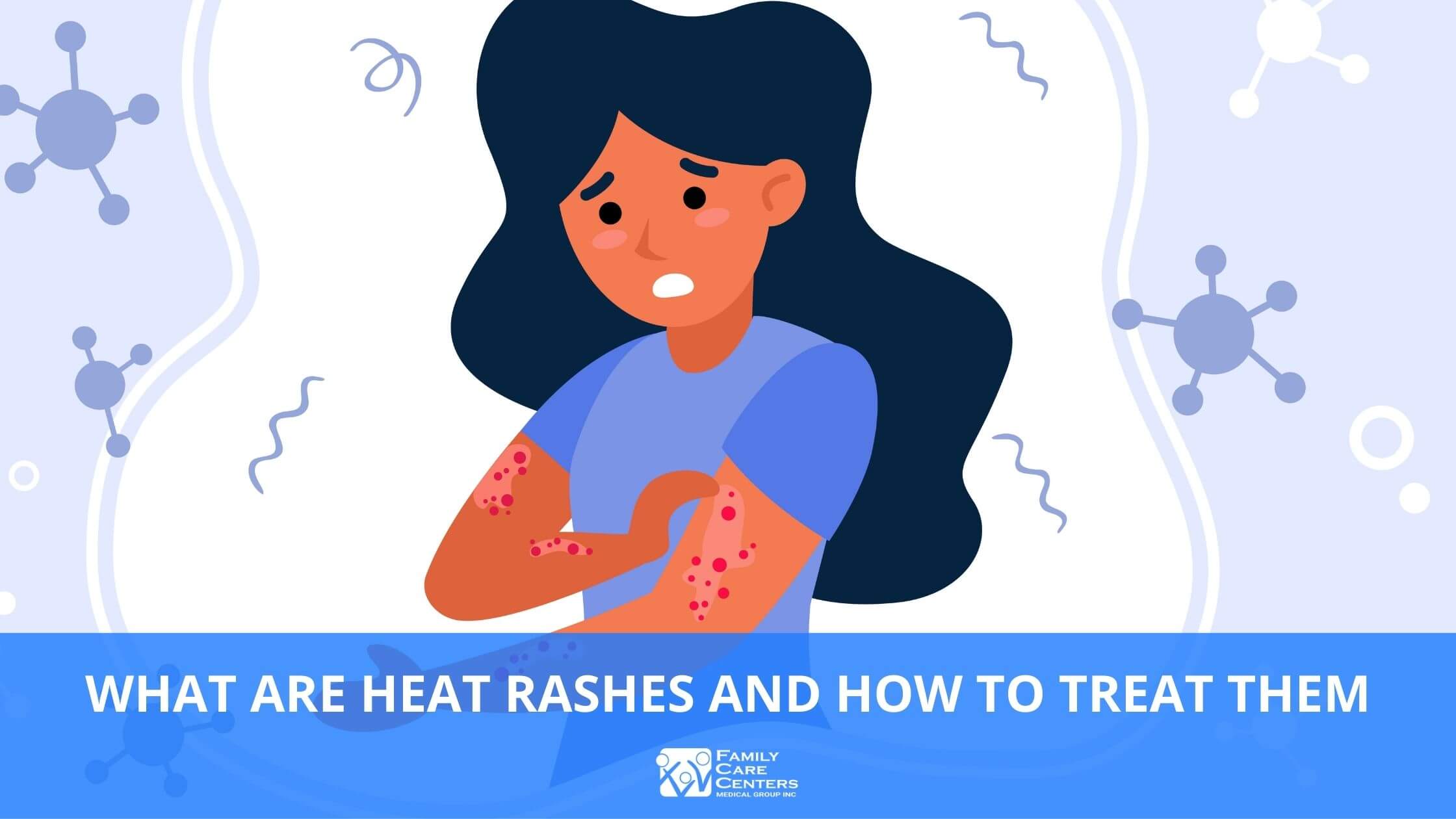

Fountain Valley Urgent Care Permanently Closed. We’re Here to Care for You at Our Other Locations.

Anybody can get heat rash (also known as miliaria), whether the person is an adult or a child. This condition is more prevalent in hot, humid climates. The mild disorder usually does not require medical intervention. However, treatment for heat rash is sometimes necessary to prevent a more severe complication such as infection.
Here’s what you need to know about miliaria symptoms and treatment options.
Heat rashes are skin conditions that occur when clogged sweat ducts trap sweat under the skin. Factors that may contribute to the blockage of skin pores, causing miliaria, include:
Heat rashes manifest as small red bumps, which may be itchy or uncomfortable. In adults, the pimple-like, fluid-filled bumps appear in skin folds or areas affected by friction from clothing. Infants may experience rashes around body areas like the neck, shoulders, chest, armpits, or groin.
Types of heat rash differ depending on the depth of the sweat duct blockage. Their severity, signs, and symptoms also vary.
Apply a cold compress to the affected skin area using an ice pack or a cold piece of cloth to ease the swelling and itching. Always wrap up the ice pack instead of applying it directly to the skin. Each cold compress should last about 10 minutes, with a 10-minutes interval in between the compresses. Repeat this routine as needed.
A cool bath or shower cools the affected skin area and alleviates the itchiness. You may use a gentle exfoliant to unclog the perspiration ducts.
This remedy helps to cool the indoor air and the body to alleviate heat rash symptoms, especially in any individual on prolonged bed rest. It’s important to regularly move an immobile patient to promote the circulation of cool air to all parts of their body.
Using air conditioning indoors can also protect you when exercising in a hot climate. To minimize sweating when outdoors, choose cooler parts of the day to do any intense workout.
When you’re in loose clothing, your body will stay cooler because of the better air circulation. Natural fibers like cotton are highly preferable due to their excellent breathability.
Calamine lotion benefits the skin, as it contains zinc oxide. Apply this remedy to ease the itching and incorporate a moisturizer to prevent the skin from drying.
Take a bath in warm oatmeal water to control your skin condition. Oatmeal contains antioxidants that can relieve inflammation and itching on the skin.
Antihistamine tablets like hydroxyzine and diphenhydramine have anti-inflammation and anti-itching properties. These over-the-counter drugs can help relieve heat rash symptoms.
You can apply this cream to manage itching and soreness from heat rash. Applying it twice a day can help control the skin condition in children.
This is a promising remedy for skin irritation and promotes detoxification. However, if your symptoms do not improve, consult a doctor.
Aloe vera has strong anti-inflammatory properties and applying the gel on the affected skin area can help alleviate irritation and swelling.
You may mix sandalwood powder with water and apply the paste to the heat rash area. The solution’s analgesic and anti-inflammatory effects make it a potential heat rashes treatment option. To rule out the possibility of allergic response, first, apply the paste to a healthy area of your skin.
Pine tar can control inflammation on the heat rash skin area. You may use it as a topical remedy for itching, irritation, and other associated skin discomforts.
Mild forms of heat rash can go away with or without these home self-care remedies. However, persistent miliaria can expose you to bacterial infection with inflammation and itchy pustules. You should see a healthcare practitioner right away if you or your child has the following heat rashes symptoms or associated complications:
Generally, any persistent heat rash symptoms in an adult or a child require a healthcare provider’s help. If you’d like to learn more about practical miliaria treatment options, visit our urgent care center in Irvine, urgent care clinic in Fountain Valley, or urgent care center in Costa Mesa. We will give you or your child the right medical assistance based on your unique treatment needs. We are offering both in-person and video visits.
Share Your Valuable Thought